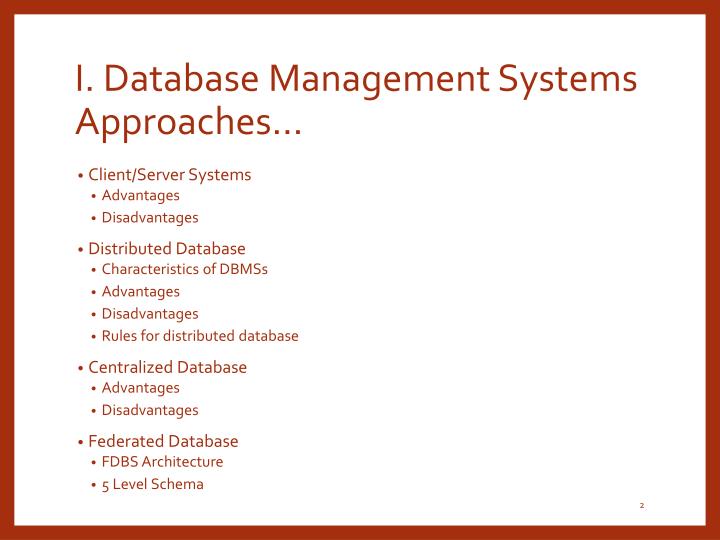Database Management Mark Gillenson Manual
With businesses relying heavily on relational databases for operations and data mining, it's more important than ever to have a strong understanding of this critical component. This project manual that accompanies Introduction to Databases arms readers with the necessary knowledge, exploring databases and SQL language database management systems from the ground up. They'll quickly learn how to recognize vital business information, design a database based on this information, and retrieve and modify that information in a useful manner. You can get there Introduction to Databases Project. With businesses relying heavily on relational databases for operations and data mining, it's more important than ever to have a strong understanding of this critical component.
Wiley Pathways Introduction to Database Management Project Manual. Gillenson has been practicing, researching, teaching, writing, and, most. Introduction to Database Management: WITH Project Manual by Mark L. Gillenson, 058, available at Book Depository with free delivery worldwide. Database Management Mark Gillenson Manual We provide over 10,000 solution manual and test bank, need any test bank or solutions manual please contact me email:testbanksm01@gmailcom if you are looking for a test bank or a solution manual for your academic textbook then you are.
This project manual that accompanies Introduction to Databases arms readers with the necessary knowledge, exploring databases and SQL language database management systems from the ground up. They'll quickly learn how to recognize vital business information, design a database based on this information, and retrieve and modify that information in a useful manner.
You can get there Introduction to Databases Project Manual offers a wealth of easy-to-read, practical, up-to-date activities that reinforce fundamental database design and management concepts. You'll also learn to develop the core competencies and skills you'll need in the real world, such as how to:. Install SQL Server 2005. Read and create an ERD. Design and implement a database. Use DDL and DML commands.

Use and monitor transactions. Manage security principles, permissions, and backups. Design data environments. Use replication With five to seven projects per chapter ranging from easy to more advanced, Introduction to Databases Project Manual is ideal for both traditional and online courses that are oriented toward strengthening database management skills. Introduction to Databases Project Manual is an excellent companion to Gillenson's Introduction to Databases (ISBN: 978-0-470-10186-5). Wiley Pathways helps you achieve your goals Not every student is on the same path, but every student wants to succeed. The Information Technology series in the new Wiley Pathways imprint helps you achieve your goals.
The books and project manuals in this series-Introduction to Databases, Introduction to Programming Using Visual Basic, Introduction to Operating Systems, Networking Basics, Windows Network Administration, Network Security Fundamentals, and PC Hardware Essentials-offer a coordinated information technology curriculum. Learn more at www.wiley.com/go/pathways. Introducing to Data and Data Management 1.1 Identifying Business Data 1.2 Identifying Human Data Sources 1.3 Installing SQL Server 2005 Evaluation Edition 1.4 Learning About SQL Server Management Studio 1.5 Identifying Key Management Areas 2. Introducing Databases and Database Management Systems 2.1. Comparing Database Models 2.2 Identifying DBMS Architecture and Components 2.3 Reviewing Server Hardware Resources 2.4 Investigating SQL Server Databases 2.5 Identifying Application Requirements 3. Data Modeling 3.1 Understanding Data Modeling Concepts 3.2 Recognizing Entities Attributes and Identifiers 3.3 Recognizing Relationships 3.4 Reading an ERD 3.5 Creating an ERD 3.6 Viewing Basic Database Objects 4. Designing a Database 4.1.

Recognizing Key Concepts 4.2 Converting Relationships 4.3 Reviewing a Normalized Database 4.4 Recognizing Normalization Errors 4.5 Normalizing Data 5. Implementing a Database 5.1 Understanding Terms and Concepts 5.2 Identifying Solution Requirements 5.3 Creating a Database 5.4 Creating Tables Part 1 5.5 Setting Table Constraints 5.6 Creating Tables Part 2 6. Understanding the SQL Language 6.1 Understanding Terms and Concepts 6.2 Investigating Help Resources 6.3 Comparing Command Environments 6.4 Using the SELECT Statement 6.5 Using DDL Commands 6.6 Using DML Commands 7. Data Access and Manipulation 7.1 Understanding Data Access 7.2 Retrieving Data 7.3 Using Advanced Data Retrieval 7.4 Using Batches and Scripts 7.5 Recognizing and Correcting Errors 8. Improving Data Access 8.1 Understanding Data Access 8.2 Investigating Resources and Configuration Settings 8.3. Monitoring Performance 8.4.
Recognizing Bottlenecks 8.5. Using Views and Indexes 8.6.
Using Procedures and Functions 9. Database Administration 9.1 Understanding Administration 9.2 Understanding Roles and Responsibilities 9.3 Matching Lifecycle Requirements 9.4 Resolving Administration Issues 9.5 Managing 'As-needed' and Periodic Tasks 10. Transactions and Locking 10.1 Understanding Transactions and Locking 10.2 Understanding Transaction Types 10.3 Understanding Transaction Isolation and Locking 10.4 Using Transactions 10.5 Monitoring Transactions and Clearing Blocked Transactions 11.
Database Management Mark Gillenson Manualidades
98 chevy k1500 exhaust system. Data Access and Security 11.1 Understanding Data Access and Security 11.2 Designing for Security 11.3 Understanding Your Security Environment 11.4 Managing Security Principals 11.5 Managing Permissions 11.6 Managing Backups 12. Supporting Database Applications 12.1 Understanding Support Configurations 12.2 Designing Data Environments 12.3 Working in a Distributed Environment 12.4 Using Distributed Queries 12.5 Using Replication 12.6 Understanding Data Issues.